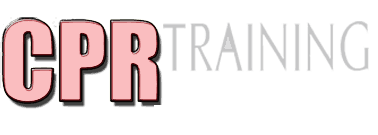Painful swallowing is also called odynophagia.
It is often described as any pain characterized by a squeezing, burning sensation that occurs anywhere between the neck and breastbone (sternum). Painful swallowing may be symptomatic of simple infections or a serious underlying medical disorder. Painful swallowing is often confused with difficulty swallowing (dysphagia), a sensation that food or liquid lodged anywhere between the throat and any point before it enters the stomach. It is critical to distinguish between the two for easier diagnosis as different causes are attributed to each.
Swallowing is a complex act that involves chewing food and moving it to the back of the mouth to be brought down the oesophagus and eventually to the stomach, where it is further digested. Numerous nerves work together from the mouth, throat and oesophagus. Swallowing is primarily voluntary in the oral phase but after initial swallowing, several different muscles will involuntarily contract allowing food to pass.
Causes of Painful Swallowing
Painful swallowing can be attributed to infections, oesophageal problems and other problems. The specific causes can include:
- Infections, mostly viral and bacterial
- Sore throat (pharyngitis)
- Gum disease (gingivitis)
- Flu
- Ear infection
- Oral thrush
- Human immunodeficiency virus (HIV)
- Herpes simplex virus
- Cytomegalovirus
- Oesophageal problems
- Oesophageal spasms
- Esophagitis
- Gastroesophageal reflux disease (GERD)
- Achalasia
- Ulcers in the oesophagus
- Other causes:
- Throat injury
- Mouth or throat ulcers
- Objects lodged in the throat, such as large pills, chicken bones, etc.
- Tooth infection or abscess

Accompanying Symptoms of Painful Swallowing
Painful swallowing is not a medical condition but may be a symptom and signify an underlying medical condition. If it is indeed caused by an underlying medical condition, it may have several accompanying symptoms to watch out for. Observing for these symptoms may help cut down the possible causes of painful swallowing. Accompanying symptoms may include:
- Dry or productive cough
- Headache
- Fever and chills
- Red, inflamed tonsils
- Heartburn and acid reflux
- Sour taste in the mouth
- Nausea and vomiting
- Difficulty swallowing (dysphagia)
Treatment for Painful Swallowing
Painful swallowing is often caused by viral infections but can also be a medical concern. If blood is present in the stools or there is unintended weight loss, one better opt to seek medical help as it may require medical treatment. Treatment will depend on the underlying cause. The following treatments are usually recommended in cases of painful swallowing:
- If pain is ongoing while eating, eat slowly and make sure food is chewed meticulously.
- Observe for what worsens the pain. avoid very hot or very cold foods if they aggravate pain.
- If someone is choking, perform Heimlich manoeuvre immediately and follow first aid and CPR protocol for choking.
- If acid reflux or heartburn-related, take antacids.
- Sometimes, numbing mouthwashes are given to numb the throat.
First aid courses teach first aiders to have a keen eye for medical conditions that may lead to problems. Early recognition of symptoms can significantly help in reducing risks of complications from developing. The importance of being observant with symptoms such as painful swallowing may help when taking first aid courses.
Painful swallowing (2011). National Institutes of Health: MedlinePlus. Retrieved September 9, 2013, from http://www.nlm.nih.gov/medlineplus/ency/article/003116.htm
